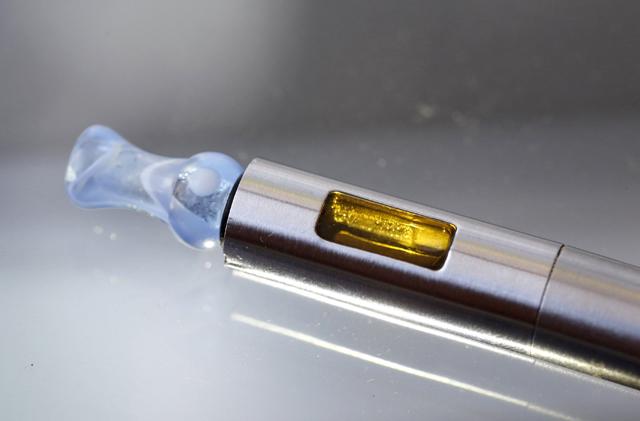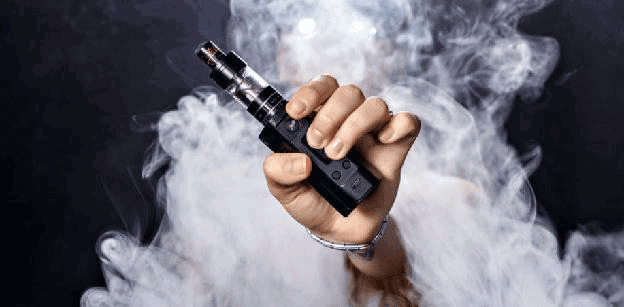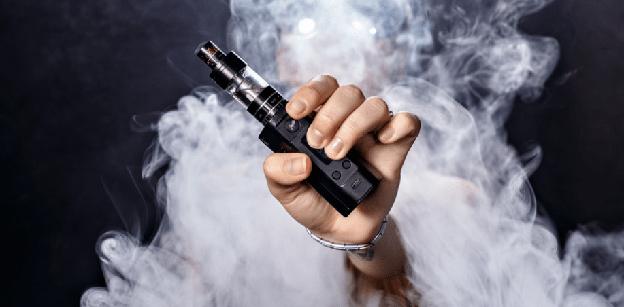You are here
Teens flock to flavoured vaping which hides grave health dangers
By Los Angeles Times (TNS) - Sep 28,2019 - Last updated at Sep 28,2019
By Soumya Karlamangla
LOS ANGELES — High schoolers rallying in downtown Los Angeles this week chanted “Fight the flavour” as they showed their support for banning the flavoured tobacco products that health experts say are fuelling an epidemic of nicotine addiction among youths.
Among the demonstrators was Jennyfer Cortez, 16, who said she tried an e-cigarette for the first time five years ago because it tasted like blueberries, her favourite fruit. She didn’t like vaping because it made her cough, but she has seen her peers vape at their lockers, in the school bathroom and sometimes even in class.
“These kids are so addicted to nicotine, they can’t go one class period without vaping,” said Cortez, a junior at Ánimo Jackie Robinson Charter High School in South L.A.
Governments around the nation are considering banning flavoured tobacco products amid burgeoning e-cigarette use among youths and a mysterious outbreak of a serious lung disease that appears to be linked to vaping. The legislative efforts would eliminate the fruity e-cigarette pods with flavours such as mango, strawberry and mint, which public health experts say are giving nicotine a foothold among youths.
Many of the regulations, including the one being considered by Los Angeles County officials that drew demonstrators to downtown L.A. on Tuesday, would also outlaw menthol cigarettes. Public health experts say the marketing and sustained popularity of menthol cigarettes provide a window into the playbook that e-cigarette companies could be using when it comes to selling flavoured nicotine products.
Menthol cigarettes, which were invented in the 1920s, were promoted as healthier than regular cigarettes, despite being more dangerous, experts say.
Aggressive marketing of menthol cigarettes to African Americans worked — approximately 85 per cent of African American smokers now prefer menthols, said Phillip Gardiner, a researcher with the University of California’s Tobacco-Related Disease Research Programme.
Over the last century, attempts to ban menthols have failed, because of lobbying by the tobacco industry as well as the cigarettes’ ubiquity, experts say. The Trump administration announced a proposal last year to take them off the market, but the effort appears to have stalled.
“Menthol is the ultimate candy flavour — it helps the poison go down easier,” Gardiner said.
Youths are experimenting with flavoured e-cigarettes; from 2017 to 2018, e-cigarette usage among high schoolers jumped 78 per cent, according to the US Centres for Disease Control and Prevention. E-cigarette devices work by heating a liquid cartridge containing nicotine, and perhaps an added flavour, and turning it into a vapour the user can inhale.
This month, Michigan became the first state in the nation to ban flavoured e-cigarettes. The Trump administration said this month that it is also considering outlawing the products.
The concerns about flavoured tobacco products mirror those about menthol cigarettes, which are flavoured with a mint extract and have served as a gateway to addiction for almost a century, experts say.
“Tobacco companies have known this for a very long time…. Nicotine on its own is really bitter tasting, it does not taste good at all,” said Thomas Ylioja, a tobacco cessation expert at National Jewish Health, a research hospital in Denver. “As a former youth smoker myself, menthol was how I got started.”
Legend has it that in 1925, a man named Lloyd “Spud” Hughes placed his tobacco in a baking powder tin along with menthol crystals, which he was using to treat a cold. The next day, he rolled his tobacco and accidentally created a menthol cigarette.
Over the following decades, many companies began selling menthols, marketing them as a less harsh alternative to traditional cigarettes.
Tobacco executives noticed a slight preference for menthols among African Americans and began targeting them with advertising. Popular menthol brand Kool hired Elston Howard, an African American catcher for the New York Yankees, as a spokesman, and cigarette companies bought ads in Ebony magazine. Predictably, the percentage of black people smoking menthols skyrocketed, according to a paper Gardiner wrote detailing what he calls the “African Americanisation of menthol cigarette use”.
“Unfortunately, the tobacco industry efforts have been very successful,” Gardiner said in an interview.
Menthol not only makes tobacco taste better, it also numbs the throat so people can smoke more cigarettes, he said. Worse, menthol allows for deeper inhalation of the smoke, which lets more nicotine into the body, which makes people more addicted, he said.
In 2009, a federal law outlawed many flavoured cigarettes, such as chocolate and vanilla, but not menthol. The long-term success of menthols paved the way for flavoured e-cigarettes, said Bill Novelli, former president of the Campaign for Tobacco-Free Kids.
“It seems pretty clear that these flavours were basically created to seduce and entice kids into smoking,” he said.
The results of a survey conducted by the American Heart Assn. of 1,500 adult e-cigarette users published this month found that nearly a third of adults who use e-cigarettes said a primary reason they started was because of the flavours. That percentage was even higher among young adults, according to the survey.
“The flavouring in these nicotine products attracts younger people at a time when they are most likely to become addicted if they try it,” said Dr Jessica Sims with the American Heart Association.
However, those opposed to banning flavoured e-cigarettes say they offer a way for smokers to switch to a safer alternative. Experts agree that despite the risks of e-cigarettes, they remain less dangerous than traditional cigarettes.
At the rally outside the LA County Board of Supervisors meeting Tuesday, people shouted “Save our vapes” over the high schoolers.
Alan Ngo, 32, held a sign that said, “I Vote, I Vape”. Four years ago, he switched from smoking to vaping, the only thing that helped him quit traditional cigarettes, he said. He said his lungs feel better than they did before. He is able to run farther and he coughs less, he said.
“I think the flavours save lives,” said Ngo, who lives in Rosemead.
At the meeting on Tuesday, county supervisors advanced the ban on flavoured tobacco, which would make illegal not only the fruity pods of liquid nicotine and traditional menthol cigarettes, but also mint chewing tobacco and cream cigars, among other products. The ban will affect only unincorporated areas, which include about 1 million people.
Also on Tuesday, Kevin Burns, the chief executive of e-cigarette giant Juul, stepped down. His replacement, K.C. Crosthwaite, said the company would suspend all advertising in the United States and would refrain from lobbying the Trump administration on its proposed ban of flavoured e-cigarette products.
In a statement, Crosthwaite acknowledged the company must work with policymakers and regulators because its “future is at risk due to unacceptable levels of youth usage and eroding public confidence in our industry.”
Related Articles
People standing near someone using an e-cigarette will be exposed to nicotine, but not to other chemicals found in tobacco cigarette smoke, according to a new study.
AMMAN — Experts refute the misconception that e-cigarettes are less harmful than regular cigarettes, and are calling on the authorities to l
Smokers who also use e-cigarettes may be half as likely to give up tobacco as smokers who never vape at all, a European study suggests.Even



















